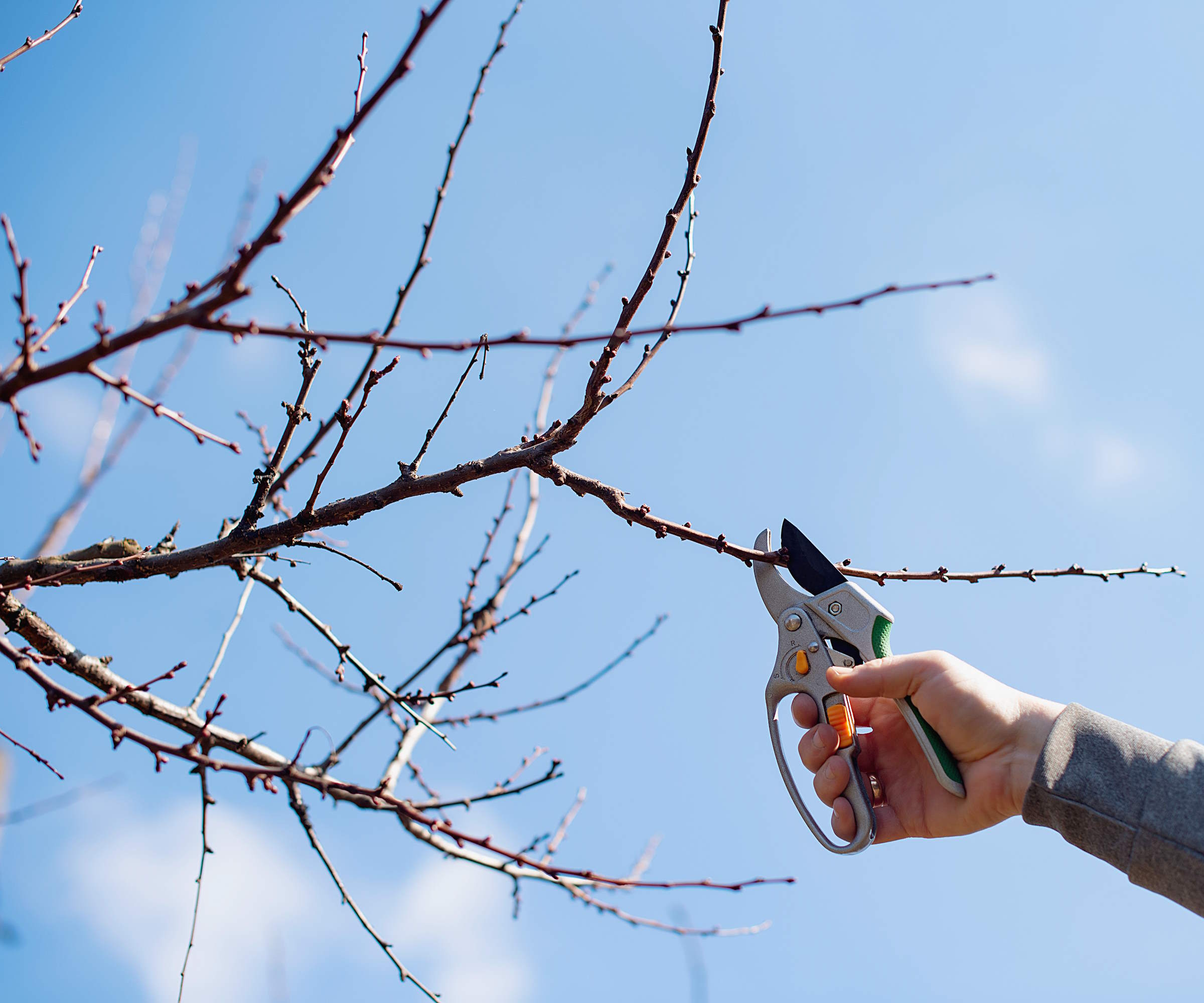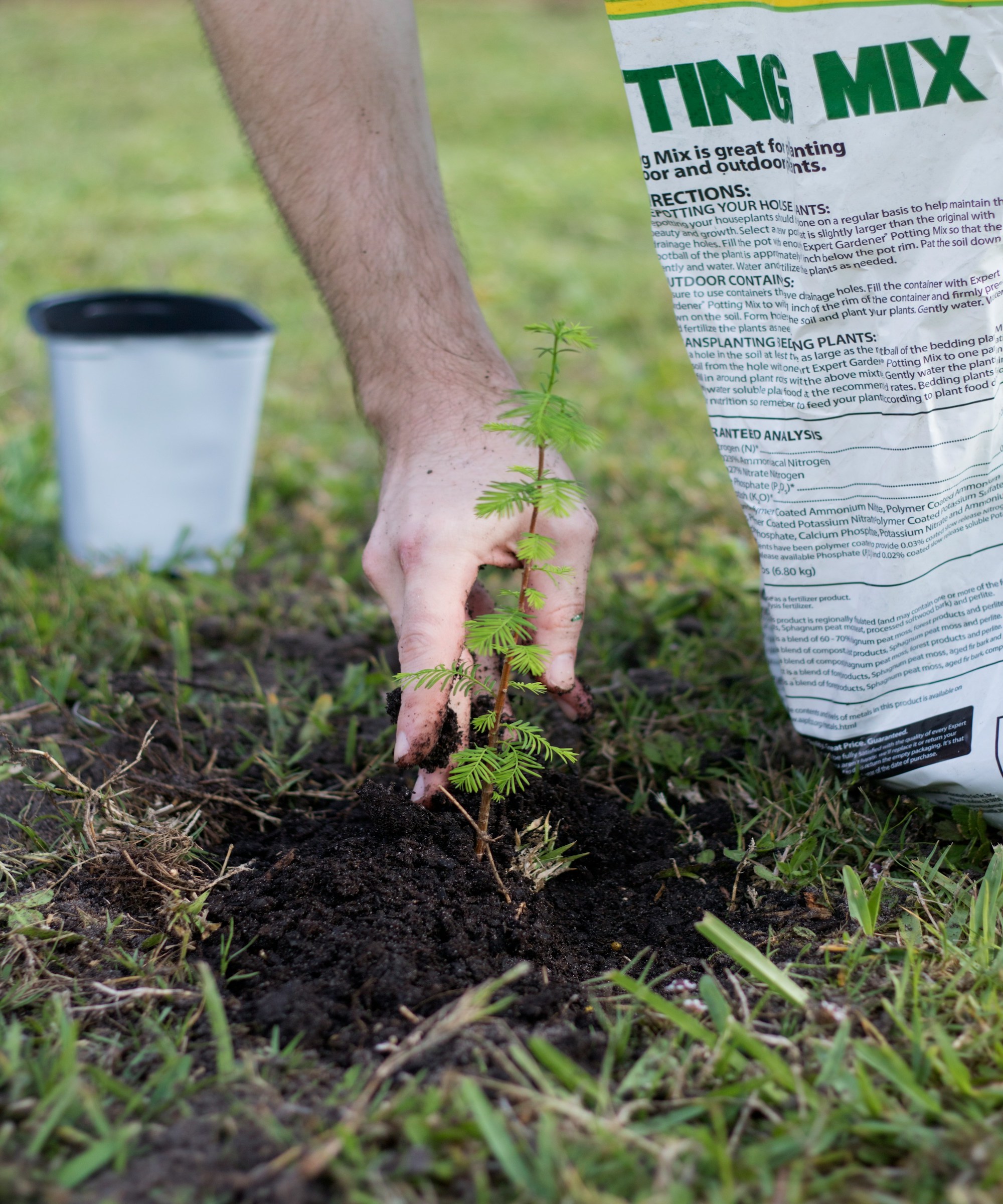
Trees are wonderful for the garden and a balm for the soul. As absorbers of carbon dioxide, they help to combat climate change, and being under the dappled shade of one can reduce your stress levels and improve your sense of wellbeing.
Recreating a handsome tree that you might be admiring in your neighbor’s yard is easier to do than you might think – if they generously allow you to take a small offcut or branch. Stem cutting is a propagation technique that can be used on herbaceous and woody plants.
It is quicker than raising a tree from a seed, and plants grown from cuttings are often more resistant to stress. It's also cheaper than buying a sapling from a nursery. Follow our step-by-step guide on how to grow a tree from a branch or small stem, and soon you’ll be cultivating your own woodland.
The tools you will need for the task
- Garden shears, such as these from Target or a small sharp knife
- Rooting hormone, available at Lowe's
- Domed plastic propagator, from Amazon
- A spade, such as this great Fiskars model from Amazon
Step 1: Select your cutting

Always make sure you are using clean and sharp tools before you go out to cut your stem.
'Look for healthy, non-flowering branches about the thickness of a pencil,' says Evan Torchio, an arborist. ‘Ideally, they'll have three-four nodes (the little bumps where leaves grow) and come from softwood growth, typically in late spring/early summer. Ideally, take cuttings in mid-June/early July for most deciduous trees when they're actively growing.
‘Evergreens are a different story. They often require dormant hardwood cuttings taken in late winter. Avoid branches with signs of disease or damage and use sharp, clean pruning shears to make a clean, angled cut just below a node. Trim off any lower leaves to focus energy on root development.’
It is a good idea to take cuttings from the upper part of the plant, choosing lateral shoots rather than terminal shoots. Lateral shoots grow out to the side while terminal shoots are at the tip of a branch or trunk. If these are removed it can affect the growth of the parent plant.
Step 2: Prepare the cutting for rooting

To encourage root growth, dip the cut end of the branch into a rooting hormone, then place in water or in sandy soil depending on the type of tree you are propagating.
‘Some tree species, like willow or poplar, respond well to being started in water,’ says Tony O'Neill, gardening expert and author. ‘Place the cutting in a glass of water, ensuring that the lower nodes are submerged. Change the water every few days to keep it fresh.
‘For most tree species, planting the cutting in a pot filled with sandy soil or a well-draining potting mix works best. Insert the cutting about two-three inches deep and firm the soil around it.
'Cover the pot with a plastic bag or put it under a propagating dome to maintain humidity. Place the pot in a warm, bright location, but out of direct sunlight.’
This process will allow your branch or cutting to develop roots, and get ready for being planted out into the yard.
Step 3: Planting the cutting

When you can see that the roots are established, you can transfer the cutting to a larger pot filled with good-quality compost and continue nurturing it indoors for a few more weeks as you harden it off ready for planting in your yard.
’You can acclimate it to outdoor conditions by placing it outside for a few hours each day, increasing the time over a week or two,’ advises Tony O’Neill.
If you planted your cutting into soil originally, gently tug on the cutting to check for resistance from the new roots to see whether your nascent tree is ready for the next stage. Give it six weeks minimum to develop strong roots and to put on new growth.
When you are happy it's time to plant, choose a spot with fertile, well-draining soil and the same light as the parent tree. Dig a hole twice as wide as its existing pot, place your new tree into the hole, backfill and then firm down. Your sapling will need watering well and regularly - every 2-3 days in warmer weather. Keep the area around the new tree weed free and monitor to make sure it is putting on new growth happily.
FAQs
Should I fertilize my young tree?
It is recommended that you feed young trees in the first few years after planting. This can be done using a suitable tree fertilizer, such as these shrub and tree feed spikes from Walmart.
Growing trees from cuttings requires patience but, with time and care, can result in a treasured addition to your yard. Many trees are also fantastic to grow in pots, and can of course help to create a natural screen for your yard, offering privacy from your neighbors and shade from the sun.







